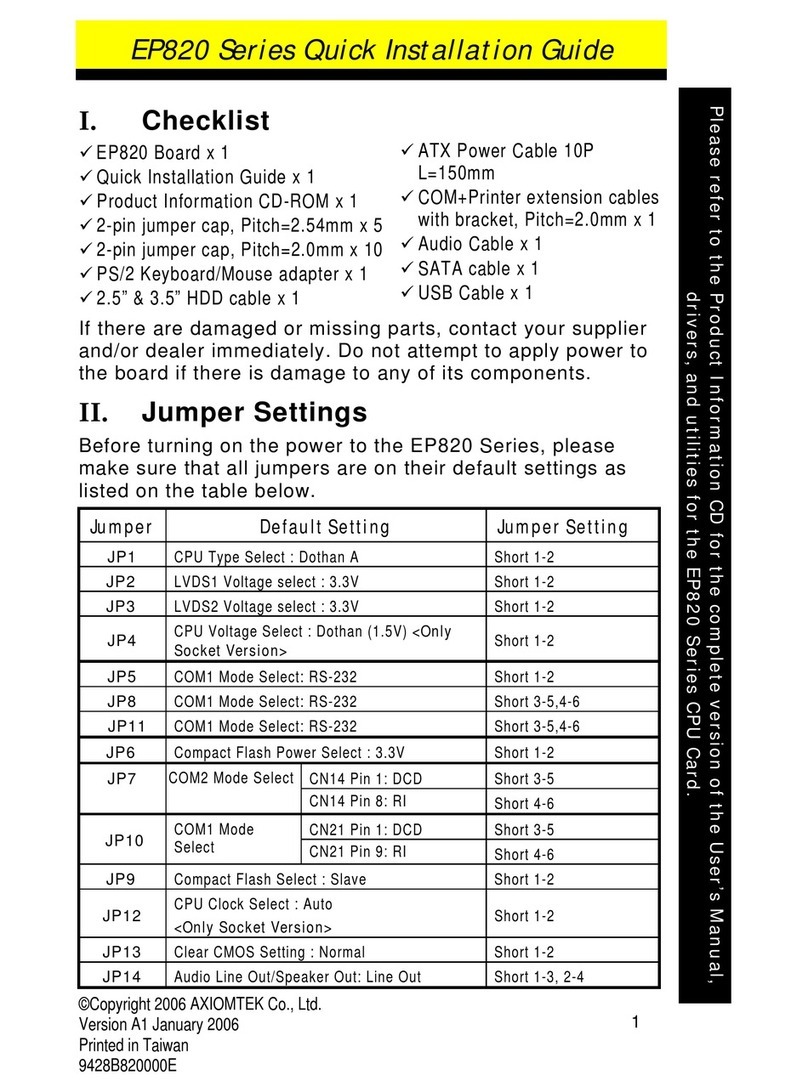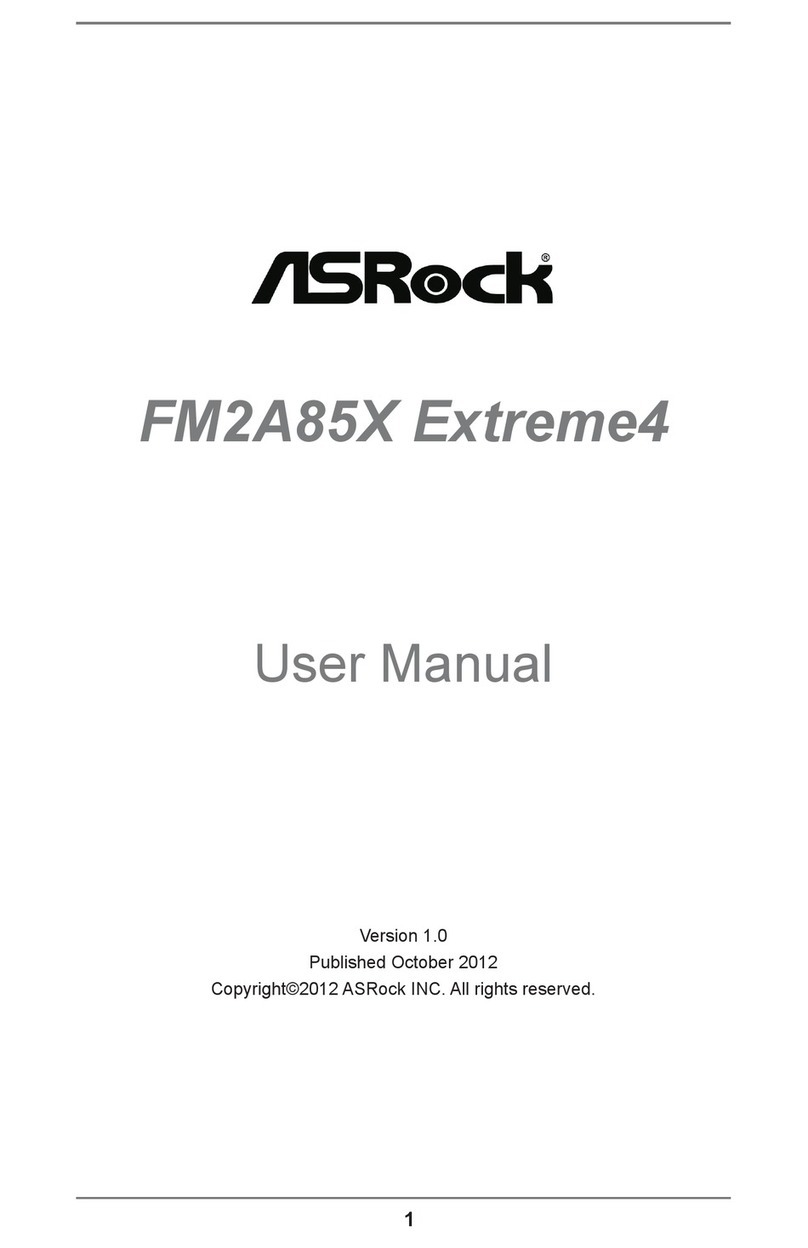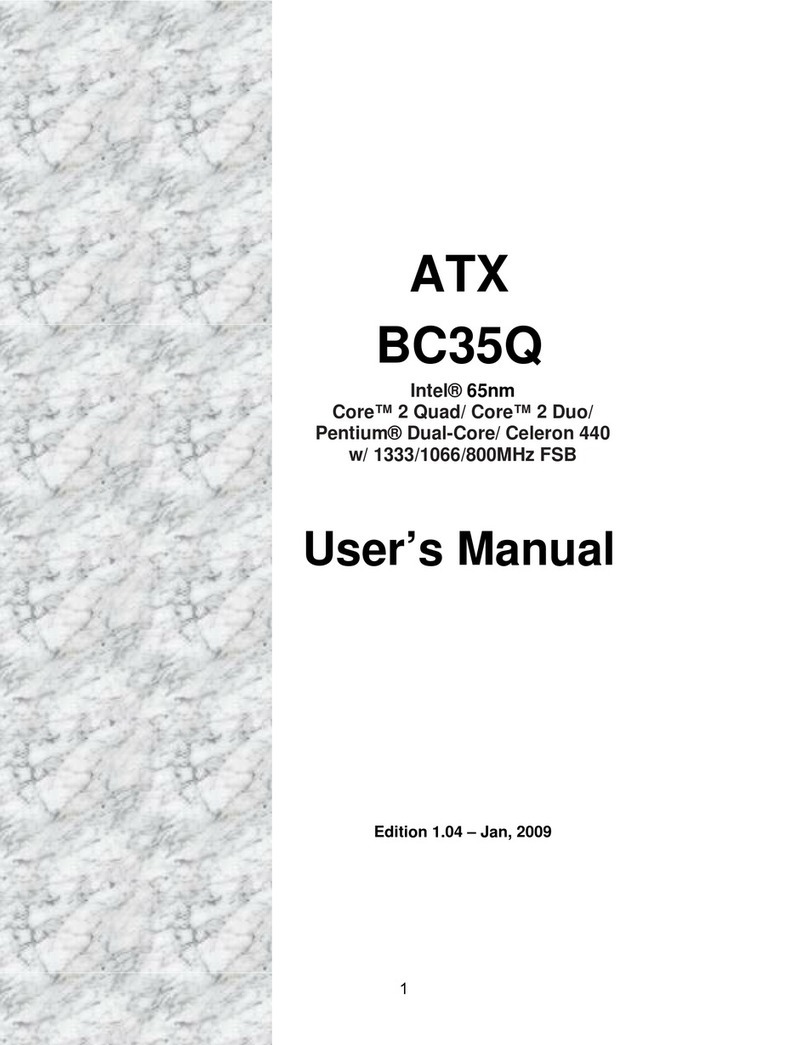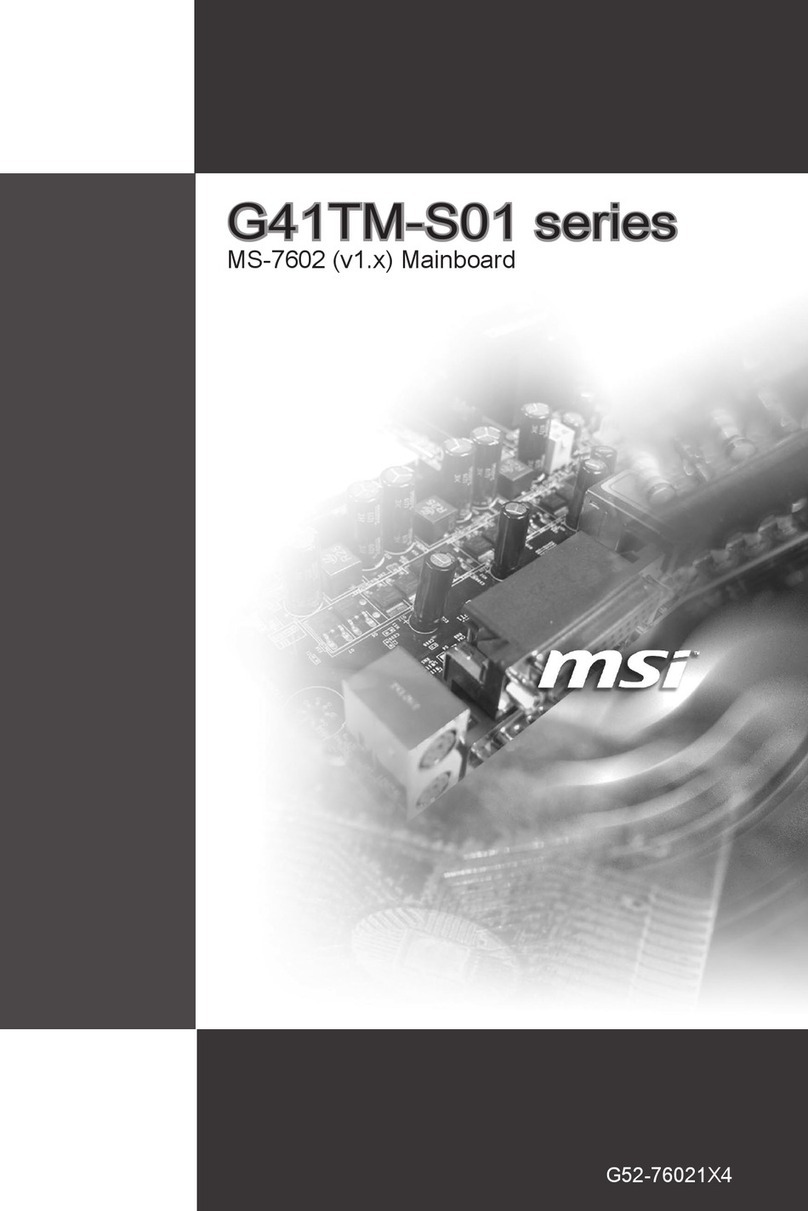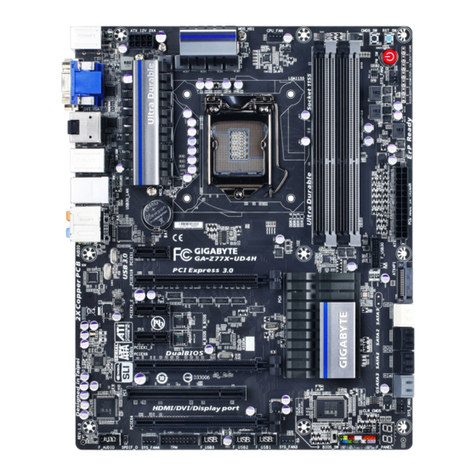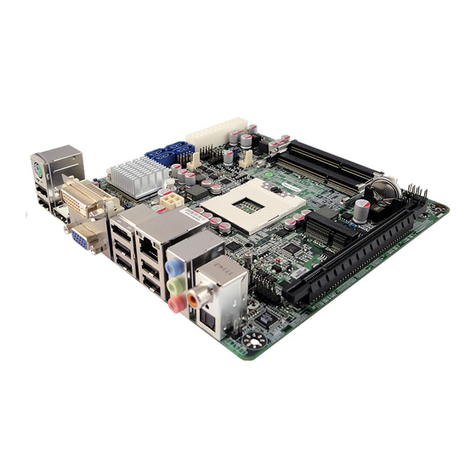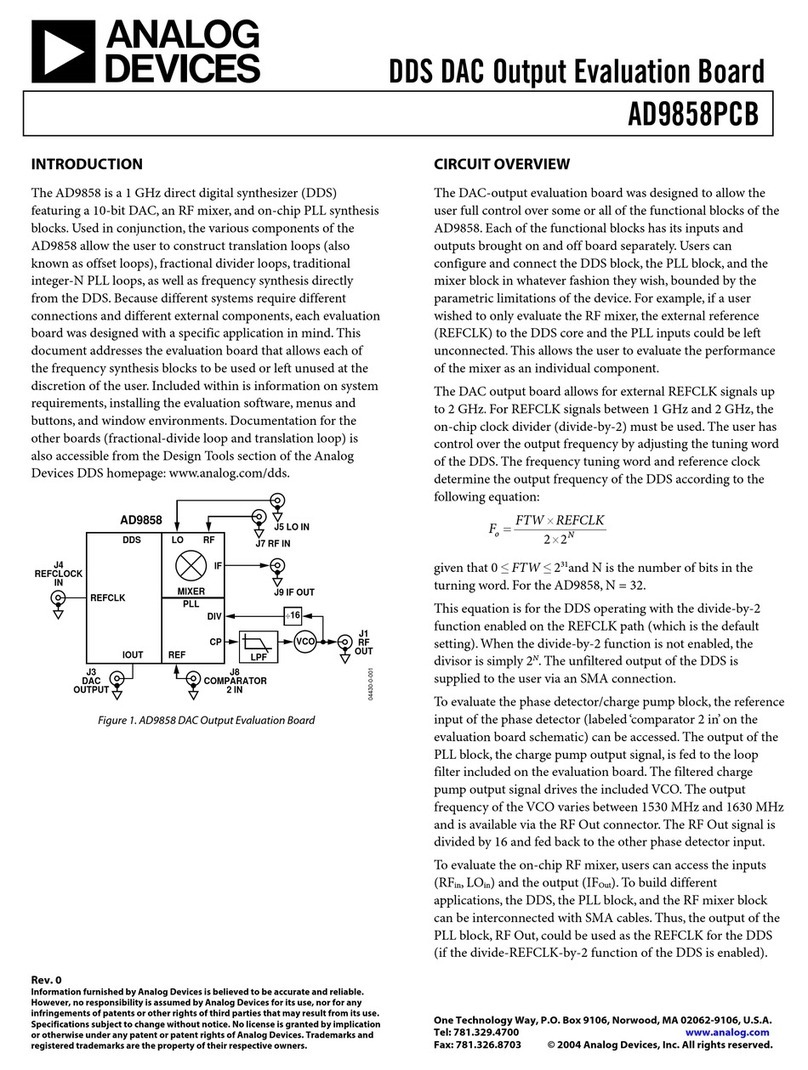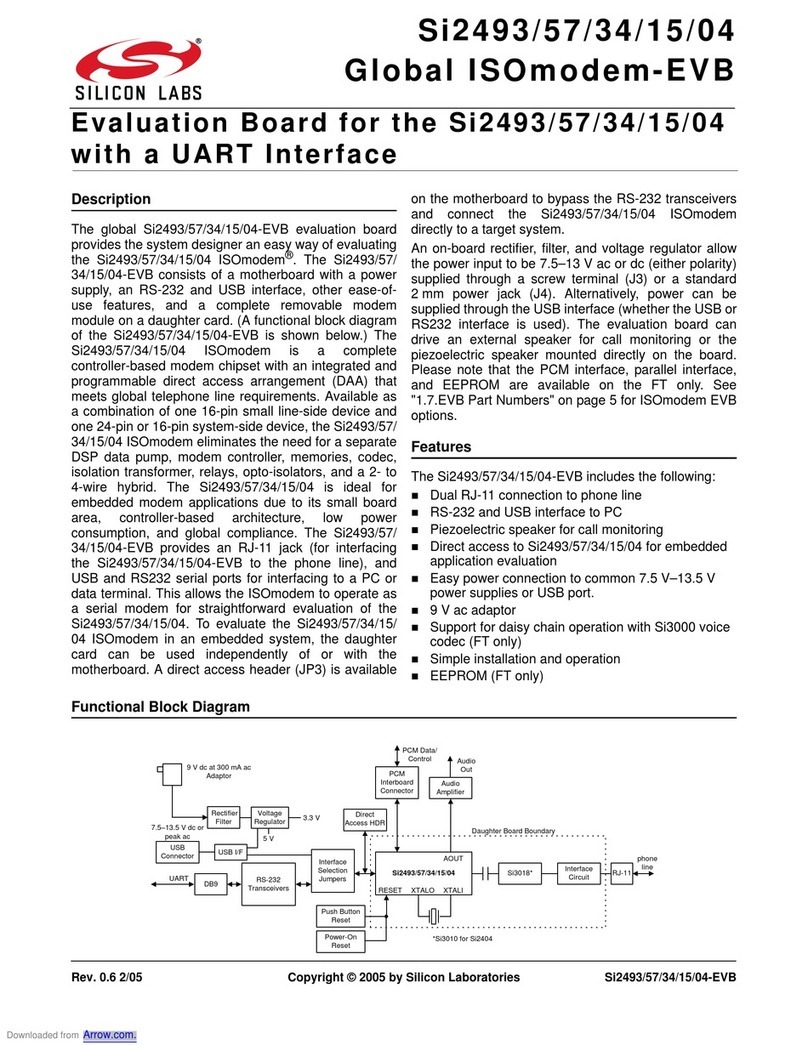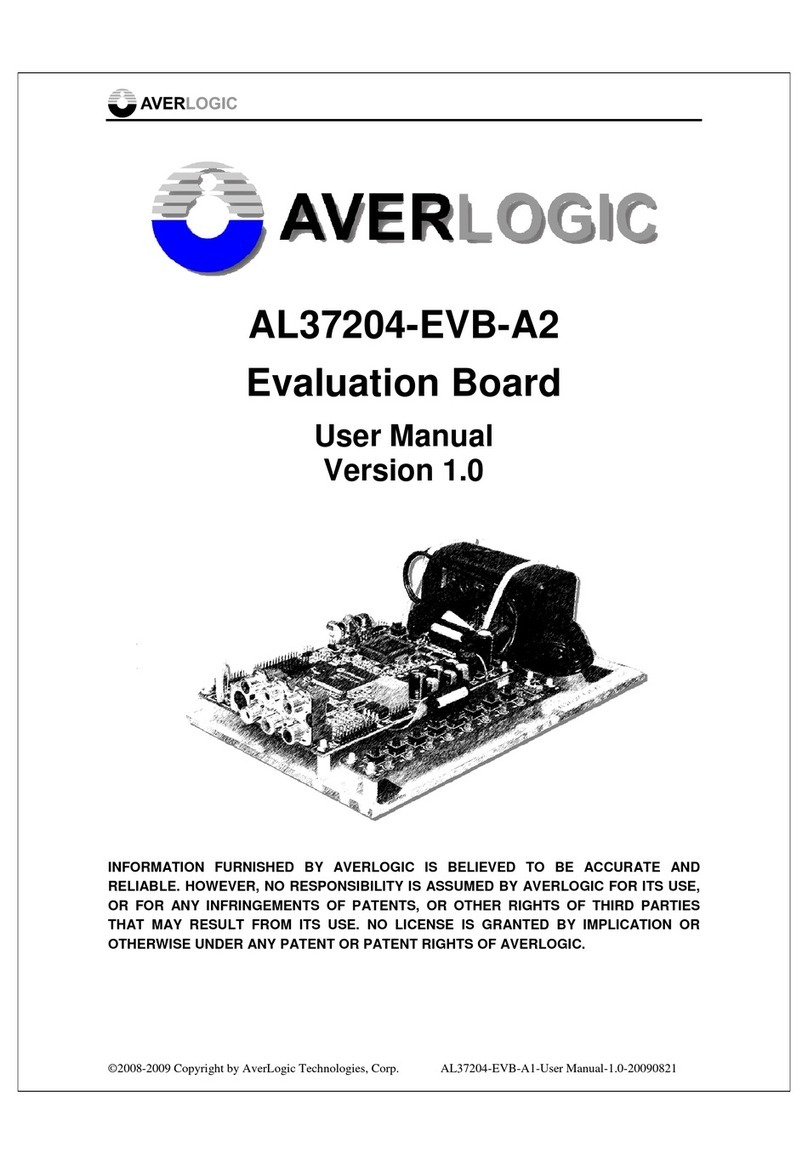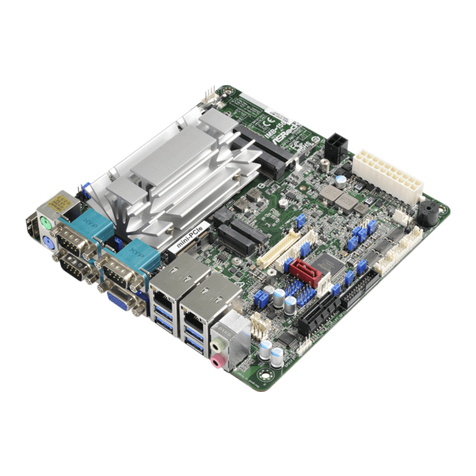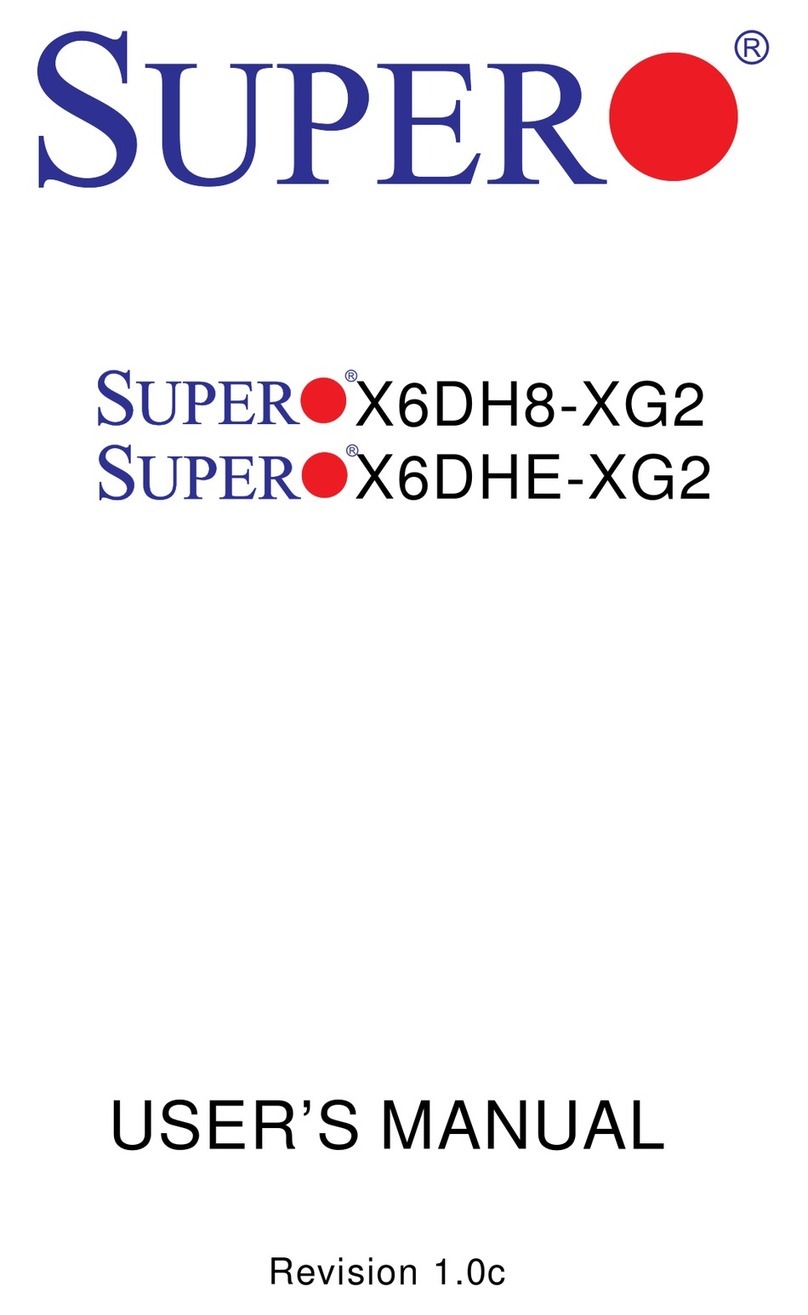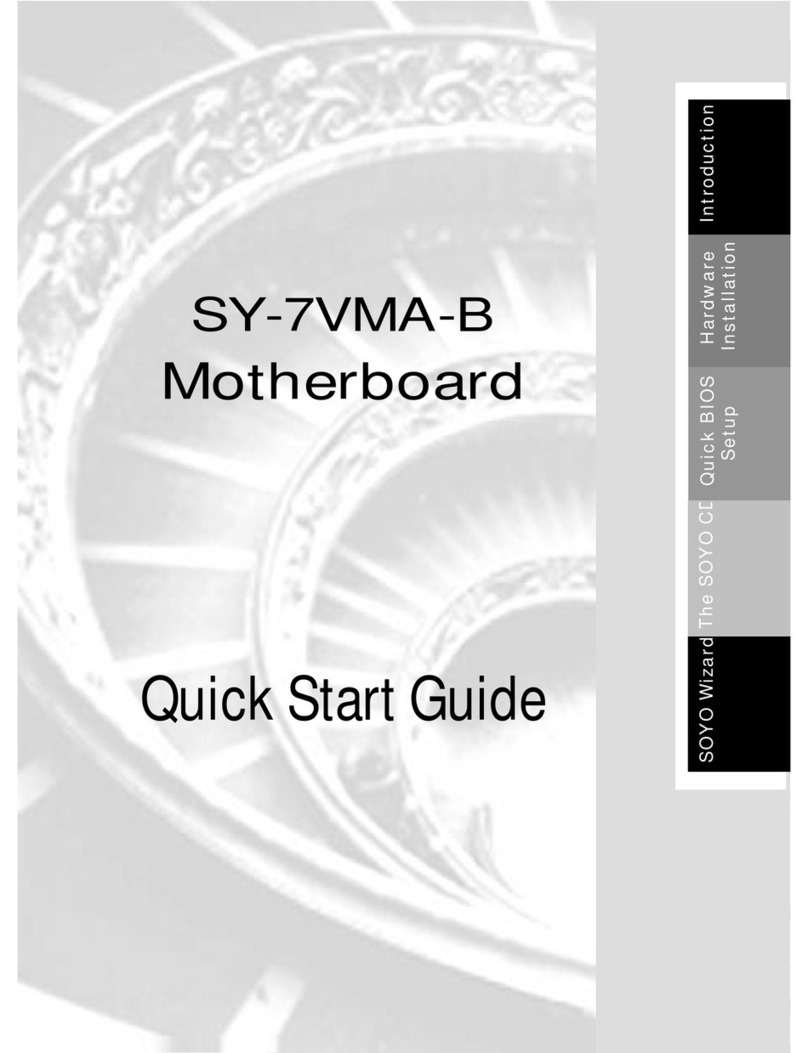NMS Communications CG 6060C User manual

100 Crossing Boulevard
Framingham, MA 01702-5406 US
A
www.nmscommunications.com
CG 6060C Installation and
Developer's Manual
9000-62421-12

CG 6060C Installation and Developer's Manual
2 NMS Communications
No part of this document may be reproduced or transmitted in any form or by any means without prior
written consent of NMS Communications Corporation.
© 2006 NMS Communications Corporation. All Rights Reserved.
Alliance Generation is a registered trademark of NMS Communications Corporation or its subsidiaries. NMS
Communications, Natural MicroSystems, AG, CG, CX, QX, Convergence Generation, Natural Access,
Natural Access MX, CT Access, Natural Call Control, Natural Media, NaturalFax, NaturalRecognition,
NaturalText, Fusion, Open Telecommunications, Natural Platforms, NMS HearSay, AccessGate, MyCaller,
and HMIC are trademarks or service marks of NMS Communications Corporation or its subsidiaries. Multi-
Vendor Integration Protocol (MVIP) is a registered trademark of GO-MVIP, Inc. UNIX is a registered
trademark in the United States and other countries, licensed exclusively through X/Open Company, Ltd.
Windows NT, MS-DOS, MS Word, Windows 2000, and Windows are either registered trademarks or
trademarks of Microsoft Corporation in the United States and/or other countries. Clarent and Clarent
ThroughPacket are trademarks of Clarent Corporation. Sun, Sun Microsystems, Solaris, Netra, and the Sun
logo are trademarks or registered trademarks of Sun Microsystems, Inc. in the United States and/or other
countries. All SPARC trademarks are used under license and are trademarks or registered trademarks of
SPARC International, Inc. in the United States and/or other countries. Products bearing SPARC trademarks
are based upon an architecture developed by Sun Microsystems, Inc. Linux is a registered trademark of
Linus Torvalds. Red Hat is a registered trademark of Red Hat, Inc. All other marks referenced herein are
trademarks or service marks of the respective owner(s) of such marks. All other products used as
components within this product are the trademarks, service marks, registered trademarks, or registered
service marks of their respective owners.
Every effort has been made to ensure the accuracy of this manual. However, due to the ongoing
improvements and revisions to our products, NMS Communications cannot guarantee the accuracy of the
printed material after the date of publication or accept responsibility for errors or omissions. Revised
manuals and update sheets may be published when deemed necessary by NMS Communications.
P/N 9000-62421-12
Revision history
Revision
Release date Notes
1.0 July 2006 EH/LBG, Beta
1.1 September 2006
LBG
1.2 December 2006 LBZ, Natural Access 2005-1, SP 3
Last modified: November 28, 2006
Refer to the NMS Communications web site (www.nmscommunications.com) for
product updates and for information about support policies, warranty information,
and service offerings.

NMS Communications 3
Table Of Contents
Chapter 1:Introduction ...............................................................................11
Chapter 2:Overview of the CG 6060C board ................................................13
Migration information..................................................................................13
Hardware differences ...............................................................................13
Software differences ................................................................................14
CG 6060C board features ............................................................................18
Software components .................................................................................20
NMS OAM ...............................................................................................20
Configuration files ...................................................................................21
Runtime software ....................................................................................22
Trunk control programs (TCPs)..................................................................23
Natural Access ........................................................................................23
NMS Fusion and the CG 6060C board ............................................................25
Ethernet interfaces .....................................................................................25
Temperature monitoring system...................................................................26
Warning error message ............................................................................26
Critical error message ..............................................................................26
Chapter 3:Installing the hardware ..............................................................27
System requirements..................................................................................27
CG driver software .....................................................................................27
Installation summary ..................................................................................28
Configuring the DIP switches .......................................................................29
Configuring the T1 or E1 interface ................................................................31
Set the NetworkInterface.T1E1[x].Type keyword .........................................31
Set the NetworkInterface.T1E1[x].Impedance keyword.................................31
Set the remaining keywords......................................................................32
Verify the cables .....................................................................................32
Sample T1 trunk configuration...................................................................32
Sample E1 trunk configuration...................................................................32
Configuring hardware echo cancellation .........................................................33
Keying the chassis......................................................................................33
Installing the board ....................................................................................37
Using the Hot Swap features........................................................................39
Completing the hardware installation ............................................................39
Chapter 4:Establishing network connections ..............................................41
Overview of network connections..................................................................41
CG 6060C board variants ............................................................................42
CG 6060C board variants with RJ-48C interfaces ..........................................42
CG 6060C board variants with NMS RJ-21 interfaces.....................................43
Pinouts .....................................................................................................44
Ethernet connectors (all variants) ..............................................................44
RJ-48C interfaces (four-trunk and eight-trunk variants only)..........................44
NMS RJ-21 interfaces (eight-trunk and sixteen-trunk variants only) ................45
Connecting to a T1 network .........................................................................46
Connecting to an E1 network .......................................................................47
Connecting to an E1 120 ohm network (RJ-48C interfaces)............................47
Connecting to an E1 120 ohm network (NMS RJ-21 interfaces).......................47

Table of Contents CG 6060C Installation and Developer's Manual
4 NMS Communications
Connecting to an E1 75 ohm network (RJ-48C interfaces)..............................48
Connecting to an E1 75 ohm network (NMS RJ-21 interfaces) ........................49
Connecting to an Ethernet network ...............................................................52
Testing trunks in loopback mode ..................................................................52
CG 6060C boards with RJ-48C interfaces ....................................................53
CG 6060C boards with NMS RJ-21 interfaces ...............................................54
Chapter 5:Configuring the board.................................................................55
Configuring and starting the system with oamsys............................................55
Creating a system configuration file for oamsys ..............................................56
Running oamsys.........................................................................................58
Changing configuration parameters...............................................................59
Using board keyword files............................................................................59
Specifying configuration file locations ............................................................60
Configuring board clocking...........................................................................60
CG 6060C clocking capabilities ..................................................................60
Configuring clocking.................................................................................63
Configuring CG 6060C board clocking using keywords...................................63
Multiple board system example..................................................................65
NETREF clocking......................................................................................67
Managing board DSP resources ....................................................................69
Setting up a single resource pool ...............................................................69
Setting up multiple resource pools .............................................................70
Using multiple resource pools ....................................................................70
Using DSPs.............................................................................................70
Sample board keyword file ..........................................................................71
Chapter 6:Configuring Ethernet interfaces..................................................73
Configuring IPv4 Ethernet connections ..........................................................73
Using IPv4 Ethernet interface keywords ......................................................73
Setting up the IPv4 Ethernet connections....................................................73
Configuring IPv6 Ethernet connections ..........................................................75
IPv6 Ethernet interface keywords...............................................................75
IPv6 addresses and routing.......................................................................75
IPv6 and neighbor discovery .....................................................................76
IP security and IPv6.................................................................................76
IPv6 path redundancy ..............................................................................77
Example configuration..............................................................................77
IPv6 standards........................................................................................78
Running in IPv4/IPv6 dual stack mode ..........................................................78
Setting up multi-homed configurations ..........................................................79
Load balancing in dual subnet configurations ...............................................79
UDP port numbers in multi-homed configurations.........................................81
Configuring the board in redundant Ethernet mode .........................................82
Configuring the board in dual subnet mode ....................................................83
Monitoring Ethernet link status events...........................................................84
Chapter 7:Verifying the installation ............................................................85
Status indicator LEDs..................................................................................85
Ethernet LEDs .........................................................................................86
Trunk LEDs.............................................................................................87
Status LEDs............................................................................................87
Hot Swap LED .........................................................................................88

CG 6060C Installation and Developer's Manual Table of Contents
NMS Communications 5
Verifying the board installation .....................................................................88
Verifying trunk connections..........................................................................89
Demonstration programs.............................................................................90
Chapter 8:CG 6060C switching....................................................................91
Switch blocking..........................................................................................91
CG 6060C switch models .............................................................................91
CAS mode switching ...................................................................................92
CAS switching limitations..........................................................................92
CAS mode switch model ...........................................................................93
H.110 and local streams ...........................................................................94
Voice and signaling information routing on T1 trunks (CAS mode) ..................95
Voice and signaling information routing on E1 trunks (CAS mode) ..................97
Default connections (CAS mode)................................................................98
PRI mode switching .................................................................................. 100
PRI mode switch model .......................................................................... 101
H.110 and local streams ......................................................................... 101
Voice information routing on T1 trunks (PRI mode) .................................... 103
Voice information routing on E1 trunks (PRI mode) .................................... 104
T1/E1 signaling information routing (PRI mode) ......................................... 104
Default connections (PRI mode)............................................................... 105
RAW mode switching ................................................................................ 106
RAW mode switch model ........................................................................ 107
H.110 and local streams ......................................................................... 108
Voice information routing on T1 trunks (RAW mode)................................... 109
Voice information routing on E1 trunks (RAW mode)................................... 110
T1/E1 signaling information routing (RAW mode) ....................................... 110
Default connections (RAW mode)............................................................. 111
Chapter 9:Echo cancellation bypass ..........................................................113
Using echo cancellation bypass................................................................... 113
Syntax ................................................................................................. 113
Setting or retrieving the echo cancellation bypass state ................................. 114
Examples ............................................................................................. 115
Chapter 10: Keyword summary ................................................................117
Keyword types ......................................................................................... 117
Setting keyword values ............................................................................. 117
Retrieving keyword values ......................................................................... 118
Editable keywords .................................................................................... 118
Informational keywords............................................................................. 120
Retrieving board information ................................................................... 120
Retrieving driver information................................................................... 120
Retrieving miscellaneous information........................................................ 121
Retrieving EEPROM information ............................................................... 121
Plug-in keywords...................................................................................... 122
Chapter 11: Keyword reference ................................................................123
Using the keyword reference...................................................................... 123
AutoStart ................................................................................................ 124
AutoStop................................................................................................. 125
Boards[x]................................................................................................ 126
BootDiagnosticLevel ................................................................................. 127

Table of Contents CG 6060C Installation and Developer's Manual
6 NMS Communications
Buffers[x].Size......................................................................................... 128
Clocking.HBus.AutoFallBack ....................................................................... 129
Clocking.HBus.ClockMode .......................................................................... 131
Clocking.HBus.ClockSource........................................................................ 132
Clocking.HBus.ClockSourceNetwork ............................................................ 133
Clocking.HBus.FallBackClockSource ............................................................ 134
Clocking.HBus.FallBackNetwork .................................................................. 136
Clocking.HBus.NetRef2Source .................................................................... 137
Clocking.HBus.NetRef2SourceNetwork......................................................... 138
Clocking.HBus.NetRef2Speed ..................................................................... 139
Clocking.HBus.NetRefSource ...................................................................... 140
Clocking.HBus.NetRefSourceNetwork .......................................................... 141
Clocking.HBus.NetRefSpeed....................................................................... 142
Clocking.HBus.SClockSpeed....................................................................... 143
Clocking.HBus.Segment ............................................................................ 144
ConferencingStream.Enable ....................................................................... 145
ConferencingStream.SlotCount................................................................... 146
DebugMask ............................................................................................. 147
DetectedBoards[x] ................................................................................... 148
DLMFiles[x] ............................................................................................. 149
DSP.C5x[x].Image ................................................................................... 150
DSP.C5x[x].Libs[y]................................................................................... 151
DSP.C5x[x].NumRxTimeSlots..................................................................... 152
DSP.C5x[x].NumTxTimeSlots ..................................................................... 153
DSP.C5x[x].OS ........................................................................................ 154
DSP.C5x[x].XLaw ..................................................................................... 155
DSPStream.SignalIdleCode[x].................................................................... 156
DSPStream.SlotCount ............................................................................... 157
DSPStream.VoiceIdleCode[x] ..................................................................... 158
DynamicRecordBuffers .............................................................................. 159
Echo.AutoSwitchingRefSource .................................................................... 161
Echo.EnableExternalPins............................................................................ 162
EnableMonitor.......................................................................................... 163
HardwareEcho.EchoChipEnabled ................................................................. 164
HardwareEcho.Trunk[x].OnOffTimeslots ...................................................... 165
HardwareEcho.XLaw ................................................................................. 166
Hdlc[x].Boot ............................................................................................ 167
Hdlc[x].RxTimeSlot................................................................................... 168
Hdlc[x].TxTimeSlot................................................................................... 169
IPC.AddRoute[x].DestinationAddress........................................................... 170
IPC.AddRoute[x].GatewayAddress .............................................................. 171
IPC.AddRoute[x].Interface......................................................................... 172
IPC.AddRoute[x].Mask .............................................................................. 173
IPv6.Link[x].Enable .................................................................................. 174
IPv6.Link[x].EnablePing ............................................................................ 175
IPv6.Link[x].HopLimit ............................................................................... 176
IPv6.Link[x].ICMPRateLimit ....................................................................... 177
IPv6.Link[x].IPSec.................................................................................... 178
IPv6.Link[x].MTU ..................................................................................... 179
IPv6.Link[x].NDAttempts........................................................................... 180
IPv6.Link[x].NDReachabilityTimer............................................................... 181
IPv6.Link[x].NDRetranTimer ...................................................................... 182
Location.CPCI.Shelf .................................................................................. 183

CG 6060C Installation and Developer's Manual Table of Contents
NMS Communications 7
Location.CPCI.Slot.................................................................................... 185
Location.PCI.Bus ...................................................................................... 187
Location.PCI.Slot...................................................................................... 188
MaxChannels ........................................................................................... 189
Name ..................................................................................................... 190
NetworkInterface.Ethernet[x].MAC_Address................................................. 191
NetworkInterface.T1E1[x].AlarmMode ......................................................... 193
NetworkInterface.T1E1[x].CRCMFMode ....................................................... 194
NetworkInterface.T1E1[x].D_Channel ......................................................... 195
NetworkInterface.T1E1[x].FrameType ......................................................... 196
NetworkInterface.T1E1[x].Impedance ......................................................... 197
NetworkInterface.T1E1[x].ISDN.D_Channel_Backup_Trunk ............................ 198
NetworkInterface.T1E1[x].ISDN.NFAS_Member[y].Board ............................... 199
NetworkInterface.T1E1[x].ISDN.NFAS_Member[y].NAI .................................. 200
NetworkInterface.T1E1[x].ISDN.NFAS_Member[y].Trunk ............................... 201
NetworkInterface.T1E1[x].ISDN.NFASGroup ................................................ 202
NetworkInterface.T1E1[x].Length ............................................................... 203
NetworkInterface.T1E1[x].LineCode ............................................................ 204
NetworkInterface.T1E1[x].SignalingType ..................................................... 206
NetworkInterface.T1E1[x].Type.................................................................. 207
Number .................................................................................................. 208
Products[x] ............................................................................................. 209
Resource[x].Definitions ............................................................................. 210
Resource[x].DSPs .................................................................................... 212
Resource[x].Name.................................................................................... 213
Resource[x].Size...................................................................................... 214
Resource[x].StartTimeSlot......................................................................... 215
Resource[x].TCPs..................................................................................... 216
SwitchConnections ................................................................................... 217
SwitchConnectMode.................................................................................. 218
TPKT.ComplexForward.Count ..................................................................... 219
TPKT.ComplexForward[x].DestinationPacketSize........................................... 221
TPKT.ComplexForward[x].LifeTimeTicks....................................................... 223
TPKT.ComplexRxPort ................................................................................ 225
TPKT.ComplexTxPort ................................................................................ 226
TPKT.Enable ............................................................................................ 227
TPKT.NumberOfComplexForwardConditions.................................................. 228
TPKT.SimpleRxPort................................................................................... 229
TPKT.SimpleTxPort ................................................................................... 230
Version.Major .......................................................................................... 231
Version.Minor .......................................................................................... 232
Chapter 12: Hardware specifications ........................................................233
General hardware specifications ................................................................. 233
Physical ............................................................................................... 233
Media stream DSP processing.................................................................. 233
IP network connectivity .......................................................................... 234
PSTN network connectivity...................................................................... 234
Intra-chassis connectivity ....................................................................... 234
Software environment............................................................................ 234
Host interface ....................................................................................... 235
H.110 compliant interface ....................................................................... 235
Environment ......................................................................................... 235

Table of Contents CG 6060C Installation and Developer's Manual
8 NMS Communications
Power requirements............................................................................... 236
DSX-1 telephony interface ......................................................................... 237
CEPT E1 G.703 telephony interface ............................................................. 237
Compliance and regulatory certification ....................................................... 238
EMC .................................................................................................... 238
Safety.................................................................................................. 238
Telecom ............................................................................................... 238
EU R&TTE statement.............................................................................. 238
Chapter 13: DSP resource management ...................................................239
Managed DSP resources ............................................................................ 239
DSPs, DPMs, and DPFs .............................................................................. 240
DSP resources ......................................................................................... 241
Worst-case resource management calculation .............................................. 242
Example............................................................................................... 242
Resource calculations ............................................................................. 244
Determining the maximum number of ports available .................................... 245
DSP resource management keywords.......................................................... 245
Resource definition string syntax ............................................................. 245
DSP image and resource definitions.......................................................... 246
Resource definitions ................................................................................. 246
Input and output slots............................................................................ 246
Resource definition examples .................................................................. 246
Conditional relationships between DPFs ....................................................... 250
Natural Access media masks and call progress masks.................................... 251
Trunk control program resource usage ........................................................ 251
Debugging resource management............................................................... 252
Using CG board debug masks.................................................................. 252
Resource management board errors......................................................... 252
Debugging resource management with cgtrace .......................................... 253
DSP files and MIPS requirements ................................................................ 253
Software echo cancellation MIPS ................................................................ 258
DSP files ................................................................................................. 265
Chapter 14: T1 and E1 trunk channels ......................................................267
Channels and transmission rates ................................................................ 267
Signaling................................................................................................. 268
Channel associated signaling (CAS).......................................................... 268
Common channel signaling (CCS) ............................................................ 268
Framing .................................................................................................. 269
T1 framing ........................................................................................... 269
E1 framing ........................................................................................... 271
Voice encoding......................................................................................... 272
Companding ......................................................................................... 272
AMI, ones density, and zero code suppression .............................................. 273
Chapter 15: Utilities .................................................................................275
Utility summary ....................................................................................... 275
f41info - Displaying DPF file resource usage ................................................. 276
Hexadecimal and ASCII ID strings............................................................ 276
cg6kcon - Displaying statistics about CG board activity .................................. 285
cg6ktool - Displaying flash memory, EEPROM, and RAM ................................. 296
cgroute - Setting up CG board IPv4 routing tables......................................... 298

CG 6060C Installation and Developer's Manual Table of Contents
NMS Communications 9
cgsetkey - Configuring IPv6 security keys and policies ................................... 300
cgtrace - Performing CG board debugging.................................................... 308
cgv6if - Adding, printing, and deleting IPv6 addresses ................................... 312


NMS Communications 11
1
1
Introduction
The CG 6060C Installation and Developer's Manual explains how to perform the
following tasks:
• Install and configure a CG 6060C board.
• Verify that the board is installed and operating correctly.
• Use the CG 6060C board keywords to configure the board.
• Use the CG 6060C board utilities.
This manual is for programmers and system integrators who develop media server
applications. This manual defines telephony terms where applicable, but assumes
that the reader is familiar with basic telephony and Internet data communication
concepts, switching, and the C programming language.


NMS Communications 13
2
2
Overview of the CG 6060C
board
Migration information
The CG 6060C board is based on the CG 6000/C, CG 6100C, and CG 6500C boards.
Although the boards are very similar, be aware of the hardware and software
differences as you migrate from one of these boards to the CG 6060C board.
Hardware differences
CG 6000/C, CG 6100C, or CG 6500C
board
CG 6060C board
DSP C5420 100 MIPS each. Each chip has
two cores
DSP C5441 133 MIPs each. Each chip has four cores.
48 DSPs for 96 cores max (9600 MIPS) 12 DSPs for 48 cores max (6384 MIPS)
CPU speed at 233 MHz — 500 MHz PPC CPU at 333 MHz
10/100Base-T Ethernet 10/100Base-T Ethernet
No echo cancellation hardware NMS proprietary echo cancellation chip
Status LEDs for each trunk:
• CG 6000 – red and yellow
• CG 6000C - red, yellow, and green
• CG 6100C - green
• CG 6500C - green
Green status LED for each trunk
CAS signaling processed in the DSP CAS signaling processed in the framer
Agere T81xx NMS proprietary TSI
As many as 8 DSP cores per HMIC stream 4 DSP cores per TSI stream
Each HMIC stream is 8 MHz with 128
timeslots
Each TSI stream is 8 MHz with 128 timeslots
Supports a 32-bit 33 MHz PCI bus Supports a 32-bit 33 MHz or 64 MHz PCI bus.
Hot Swap monitor (hsmon) displays
messages based on whether the board
handles are flipped or if the board is
physically extracted (CompactPCI only).
Hot Swap monitor (hsmon) does not differentiate
between physical extraction of the board and the board
handles being flipped when it displays messages. For
more information, refer to the NMS OAM System User's
Manual.

Overview of the CG 6060C board CG 6060C Installation and Developer's Manual
14 NMS Communications
Software differences
The software differences between the CG 6000/C, CG 6100C, CG 6500C boards and
the CG 6060C boards include changes to the:
• System configuration file
• Board keyword file
• Booting sequence
• Board information
System configuration file
The CG 6060C board product names that appear in the system configuration file
depend on the number of trunks:
Product name Trunks
CG_6060C Generic name that can be used to refer to any of the CG 6060C board variants.
CG_6060C_4 4 trunks
CG_6060C_8 8 trunks
CG_6060C_16 16 trunks
The following example shows a CG 6060C board configured using no call control.
[CG 6060C]
Product = CG_6060C
Number = 0
Bus = 2
Slot = 9
File = c6060nocc.cfg
Board keyword file
The CG 6060C board keyword file differs from the board keyword files of the CG
6000/C, CG 6100C, and CG 6500C boards in the following ways:
• The CG 6060C board uses framers instead of DSPs for signaling. You must
configure the trunks to perform signaling. Once you configure the trunks, use
only channel associated signaling (CAS) to convey signaling information:
NetworkInterface.T1E1[x].SignalingType = CAS
The CG 6060C board does not require DSPs to do signaling. Do not set the
following DSP values:
DSP.C5x[0].Files = qtsignal
DSP.C5x[0..1].Files = 8tsignal
• The CG 6060C board merges the core file and the run module to create a file
named cg6060core.ulm file. The CG 6060C board does not require the
following DLMFiles[x] settings:
DLMFiles[0] = cg6krun
DLMFiles[0] = cg6500run

CG 6060C Installation and Developer's Manual Overview of the CG 6060C board
NMS Communications 15
• In the CG 6060C configuration file, only set the DLMFiles[x] keyword when
using the board with the following software:
Software Setting
Generic ISDN DLMFiles[x] = c6060igen
Fusion DLMFiles[x] = cg6060fusion
ISDN Management DLMFiles[x] = c6060imgt.dlm
DPNSS DLMFiles[x] = c6060dpnss.dlm
NaturalFax DLMFiles[x] = cg6060fax.dlm
When you use only one DLM file, xis always 0 (zero). If using more than one
DLM file, number them sequentially starting with 0 (zero). They can appear in
any order. For example:
DLMFiles[0] = cg6060fusion
DLMFiles[1] = c6060igen
• The following keywords are available to set hardware echo cancellation
values:
• HardwareEcho.EchoChipEnabled
• HardwareEcho.Trunk[x].OnOffTimeslots
• HardwareEcho.XLaw
Note: Do not use hardware echo cancellation in conjunction with software
echo cancellation (that is, echo cancellation implemented through programs
running on CG board DSPs).
For more information about hardware echo cancellation, refer to Configuring
hardware echo cancellation on page 33.
• All DSP resources must be managed by the CG 6060C resource management
scheme. Use the following keywords to set up appropriate resource
management:
• Resource[x].Definitions and Resource[x].DSPs instead of
DSP.C5x[x].Files to specify DSPs and DSP functions.
• Resource[x].TCPs instead of TCPFiles[x] to specify TCPs.
The NMS Conferencing service implements resource management differently
than other Natural Access services. For more information, refer to the
NaturalConference Service Developer's Reference Manual.

Overview of the CG 6060C board CG 6060C Installation and Developer's Manual
16 NMS Communications
Booting sequence
The CG 6060C board booting sequence differs from the CG 6000/C, CG 6100C and
CG 6500C boards in the following ways:
• CG 6060C boards do not require that you run the burnall script to update the
flash memory on any CG 6060C boards in the chassis.
• CG 6060C boards download the run file, cg6060core.ulm, directly into SDRAM
when the boards boot up using NMS OAM. This file is installed in the
\nms\cg\load directory.
• On CG 6060C boards, the NMS OAM utility, oammon, logs boot-specific
information to CG_6060Cboot_<bus>_<slot>.txt. For information about
using the oammon utility and generating log files, refer to the NMS OAM
System User's Manual.
The following example shows sample oammon output:
Tue Mar 22 16:20:46 - OAMEVN_ALERT ERROR Board 0 "CG6060CPCI"
2:10 - log cg6x6x boot info to file C:\WINNT\system32\CG_6060Cboot_2_10.txt
Tue Mar 22 16:20:48 - OAMEVN_ALERT WARNING Board 0 "CG6060CPCI"
Writing at SDRAM 0xfda3068 for 903872 bytes ...
Tue Mar 22 16:20:56 - OAMEVN_STARTBOARD_DONE Finished INFO Board 0 "CG6060CPCI"
Board is started.
Board information
• The NMS ID for the CG 6060C board is 0x6061. For example, pciscan displays
the following information:
NMS PCI Boards Scanner
Bus Slot NMS ID
--- ---- ------
1 7 0x6061 CG_6060C
1 9 0x6061 CG_6060C
There were 2 NMS PCI board(s) detected
• The NMS OAM product number is 0x636 and is included in the
\nms\include\nmshw.h file:
#define OAM_PRODUCT_NO_CG6060C 0x631
• CG 6060C boards use the CG 6500C switching model with MVIP-95 DSP
streams of 64 to 67 as shown in the following boardinf example:
Natural Access Board Information Demo V.13 (Mar 2 2005)
MVIP-95
Board Addr Type MIPS Free memory Ports DSP Slots streams
----- ---- ---- ---- ----------- ----- --------- -------
0 2,10 CG6060C 6384 244094764 384 0..383 64-67
Total port count=384
• The subsystem ID for a CG 6060C board is 0x6061 as shown in the following
cg6ktool example (use the -A option when you run cg6ktool):
CG family command line tool, V3.00 (Mar 11 2005) (c) NMS Communications
Found 2 board(s)
Board SubSysID Bus:Slot Shelf-Slot Temp DSP Cores Trunks
CG 6060C 6061 2:10 15-137 31.0 C 96 16

CG 6060C Installation and Developer's Manual Overview of the CG 6060C board
NMS Communications 17
• CG 6060/C boards use C5441 DSPs and not C5420 DSPs for applications. The
DSP files have .f41 extensions instead of .f54 extensions. For example, CG
6000/C, CG 6100C, and CG 6500C boards use dtmf.f54, but CG 6060/C
boards use dtmf.f41. The .f41 files are in the \nms\cg\load directory (or
/nms/cg/load for UNIX), which is the same directory that contains .f54 files.
Use f41info to display file resource usage instead of the f54info utility.
• The Fusion msppsamp and tpktsamp demonstration programs include the –E
option to disable software echo cancellation running on the DSPs. Set this
option when using hardware echo cancellation on the CG 6060C board. For
information on using msppsamp or tpktsamp, refer to the Fusion Developer’s
Manual.
• The CG 6060C board includes an echo chip for providing hardware echo
cancellation capabilities and to free up DSP resources. For more information,
refer to Configuring hardware echo cancellation on page 33. To control
hardware echo cancellation on a per-timeslot basis, refer to Using echo
cancellation bypass on page 113.
• Trunk impedance settings for the CG 6060C board are based on the board
variant. For more information, refer to Configuring the T1 or E1 interface on
page 31.
• CG 6060C boards include a temperature monitoring system. If the board
temperature becomes too high, oammon generates either a warning or a
critical error message. For more information, refer to Temperature monitoring
system on page 26.
• CG 6060C boards do not support the following Switching service functions:
• swiConfigStreamSpeed
• swiGetStreamsBySpeed
All 32 H.110 streams are automatically configured for maximum capacity (8
Mbit/s or 128 timeslots).

Overview of the CG 6060C board CG 6060C Installation and Developer's Manual
18 NMS Communications
CG 6060C board features
The CG 6060C board is an NMS Communications CompactPCI board. It is a high-
density platform for IVR, fax, VoIP, and media server applications. The board uses a
high performance PowerPC processor.
Configurations with a main board and attached daughterboard provide up to 16 T1 or
E1 digital trunk interfaces and two Ethernet 10/100Base-T interfaces.
Refer to the NMS Communications web site (www.nmscommunications.com) for a list
of available CG 6060C board configurations, for a list of countries where NMS has
obtained approval for the CG 6060C board, and for product updates.
CG 6060C boards include the following features:
• DSP resources
The CG 6060C board has up to 6,384 MIPS of media processing DSPs.
• CompactPCI bus connectivity
Each CG 6060C board is designed to reside in a single CompactPCI bus slot.
Each board contains a 5-volt CompactPCI bus interface compliant with the
CompactPCI Specification PICMG 2.0 R2.1. The CompactPCI interface is a 33
MHz, 32-bit master/target device.
• Trunk connectivity
Board configurations provide up to 16 T1 or E1 network interfaces for digital
trunk connectivity through a rear I/O transition board (if the board is
equipped with trunk interfaces). You must configure the board for either T1 or
E1. For more information, refer to Configuring the T1 or E1 interface on page
31 and to NetworkInterface.T1E1[x].Type on page 207.
• H.110 bus connectivity
The CG 6060C board fully supports the H.110 bus specification. The H.110
bus enables multiple boards to share data. For example, you can connect two
or more CG 6060C boards for applications that perform trunk-to-trunk
switching. You can use H.110 compatible products from other manufacturers
with the CG 6060C board.
• Telephony bus switching
Switching for the CG 6060C board offers support for the H.110 bus within the
H.110 architecture. On the CG 6060C board, switch connections are allowed
for a total of 1024 full duplex connections between local devices and the
H.110 bus.
• Ethernet connectivity
The CG 6060C board contains two 10/100Base-T Ethernet connections
through a rear I/O transition board for fast Ethernet connectivity and support
of both IPv4 and IPv6. For more information, refer to Connecting to an
Ethernet network on page 52.
• PowerPC Microprocessor (A MCC 405 EP)
The PowerPC Microprocessor is a high performance 333 MHz RISC processor.
• Flash memory
8 MB of available flash memory is available on the board.

CG 6060C Installation and Developer's Manual Overview of the CG 6060C board
NMS Communications 19
The following illustration shows where various components are located on a CG
6060C board:
TDM streams and clocks
to framers
Alignment feature
Strawberry red key
H.110 connector
Connects to H.110 bus
Ethernet connector
Connects to rear panel
Ethernet connection
Alignment feature
Brilliant blue key
PCI bus connector
Communicates with host
PCI bus connector
Communicates with host
Hot Swap LED
Status LEDs
Trunk LEDs
Ethernet LEDs
Power PC
Digital signal processors
(DSPs) H.110 interface
10/100Base-T
Ethernet chips
PCI bridge
Connects system PCI bus to
local PCI bus

Overview of the CG 6060C board CG 6060C Installation and Developer's Manual
20 NMS Communications
Software components
Natural Access is a development environment that provides such services as call
control, system configuration, and voice store and forward. CG 6060C boards require
the following software components that are available with Natural Access:
• NMS OAM (Operations, Administration, and Maintenance) software and
related utilities.
• Configuration files that describe how the board is set up and initialized.
• Runtime software and drivers that control the CG 6060C board.
• One or more trunk control programs (TCPs) that enable applications to
communicate with the telephone network using the signaling schemes
(protocols) on the trunk.
NMS OAM
NMS OAM manages and maintains the telephony resources in a system. These
resources include hardware components (including CG boards) and low-level board
management software modules (such as clock management).
Using NMS OAM, you can:
• Create, delete, and query the configuration of a component.
• Start (boot), stop (shut down), and test a component.
• Receive notifications from components.
NMS OAM maintains a database containing records of configuration information for
each component as shown in the following illustration. This information consists of
parameters and values.
The following illustration shows the NMS OAM components:
NMS OAM Configuration database
Software
components
Board plug-in
Board
A
Board
B
OAM
Supv.
Board
plug-in
Clock
mgmt.
A
Boards
B
Table of contents
